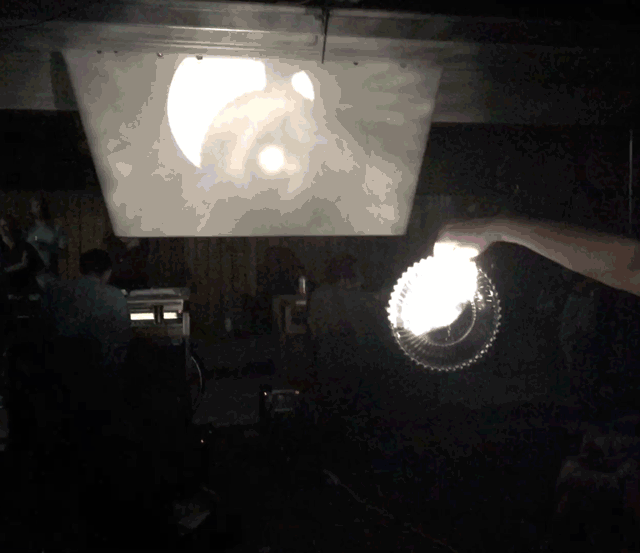
‘Jeanne Liotta’s work follows her enthusiasms, whether the result is a series of short films titled “Science’s Ten Most Beautiful Experiments,” a collaged video of nighttime sky footage (2007’s “Observando el Cielo”), or Kodachrome footage of a lunar eclipse (2005’s “Eclipse,” an inclusion in the Whitney Biennial). She notes that science and astronomy have sparked much of her work over the last 10 years, but a casual glance at her filmography reveals a zeal for teasing out vast ideas from anything that catches her eye, always taking pains to approach the materials, whether they be archival footage or a poem, with care. She says, “I think about how much to touch something or how little to touch it. All the time. How much do you intervene with something that already exists? … That just became really heavy, I realize, for a Saturday morning! This is something I think about a lot, and in editing, you’re completely manipulating relationships, so it’s a big responsibility. Sometimes when I work with not just poetry but let’s say, found images, archival images, I think about that same level of, ethics is maybe the way to talk about it. It had its own life before I ever saw it, so let me try to meet it somewhere and not handle it too much.”
‘Respect for one’s materials is one of those bromides artists toss off frequently, but the effect of Liotta’s ethics rings clearly, especially in her collaborations. “Dark Enough,” a 2011 film made with poet Lisa Gill, pulls off an integration of text and image rare in such collaborations. Instead of adding the text in postproduction, a technique common in film-poetry collaborations, Liotta manipulated the words, treating them as another layer in the flickering, black-and-white fuzz of the film: “I was a little nervous about these words from someone else that I was going to have my way with. So we did correspond, but I started my working method – I have a title board, like an actual sign board with letters that you put in, and I actually reconstructed all of the poems from the book that I like. I did the stanzas on the title board and made rubbings, like graphite and paper. It was really interesting for me to actually reconstruct the words and handle the letters and think about the language as a material – we say that all the time; I hear poets talk about that all the time, but I was literally making it into a mechanical term! I had rubbings and I had paper with text on it, and I refilmed that. I felt like I needed to start with the material aspect and then slowly find a way to bring it into the moving image.” The result is an ephemeral texture with a little frisson of personal warmth – the time-consuming process is somehow palpable in the finished piece.
‘Mounting a career retrospective, as Liotta recently has, makes a great opportunity to highlight the through lines in an artist’s body of work. While science has a central place in Liotta’s constellation of interests, it’s clear that an enthusiasm for the underlying work of scientific thought is the real spark: “Working with film has something of a scientific base in and of itself – you have that chemical aspect, you’ve got the optical aspect, so you’re really dealing with perception, ultimately, which I could call science, in a way; it’s some science and philosophy. I use the term ‘natural philosophy’ a lot because that’s what we used to call it before we had this term ‘science.’ It was everyone’s job – it was like citizen science. Each person has the responsibility or the opportunity as a human being to discover what their world is made of and what they think about it, to observe and take notes and reflect upon – that’s our job as human beings somehow, that’s what I feel like I’m doing when I make things. It’s just my thinking.”
‘Having taken a circuitous path to art – studying theatre at NYU, playing in a band, and falling in with the kind of bohemian types known so well to Austin – shows in Liotta’s conversational arabesques, in which possibility caroms about so infectiously it’s difficult not to drop the phone and get to work on a project. “I like to go back to the ancients all the time, myself,” she says. “I use quotations from Lucretius, who’s one of my main guys. But I feel like part of the reason to do that is to kind of remember that there were other trajectories of thought and knowledge that could’ve taken place, but we had to get to the Enlightenment. … Not that I’m against the Enlightenment! But things get lost along the way. It’s true in every type of art and science form. Certain kinds of advancements get made – in film, we always say, ‘Oh, once they had the synced sound down and we went down the road of the talkies, so much was lost, and what would cinema have developed into otherwise?'”
‘This notion provides a handy field guide for Liotta’s own work: What would an eclipse look like if light couldn’t bend? What would an aria transforming into a woman look like? If there’s any luck, one of those divergent realities must house a karaoke bar where Liotta’s “Sweet Dreams” is cued up and waiting for an intrepid singer. “One time I was in Pompeii and I was following along with a tour guide and talking about the pre-Renaissance mosaics, and he was saying, ‘Yes, the Renaissance came along and then all of a sudden everything was about perspective.’ We have this idea that perspective was reality, and we left behind – these mosaics just stopped there. What could have happened if that hadn’t developed? And I thought, ‘Oh my god – I had never thought of it.'”‘ — Sarah Smith
___
Stills


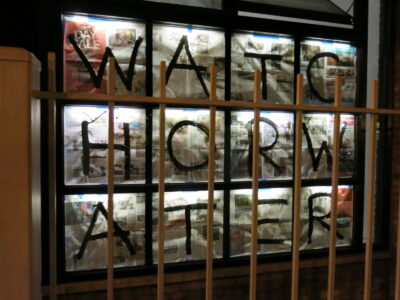
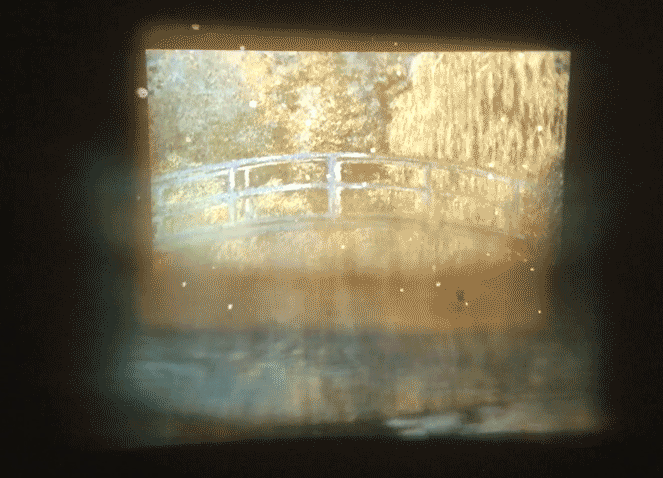
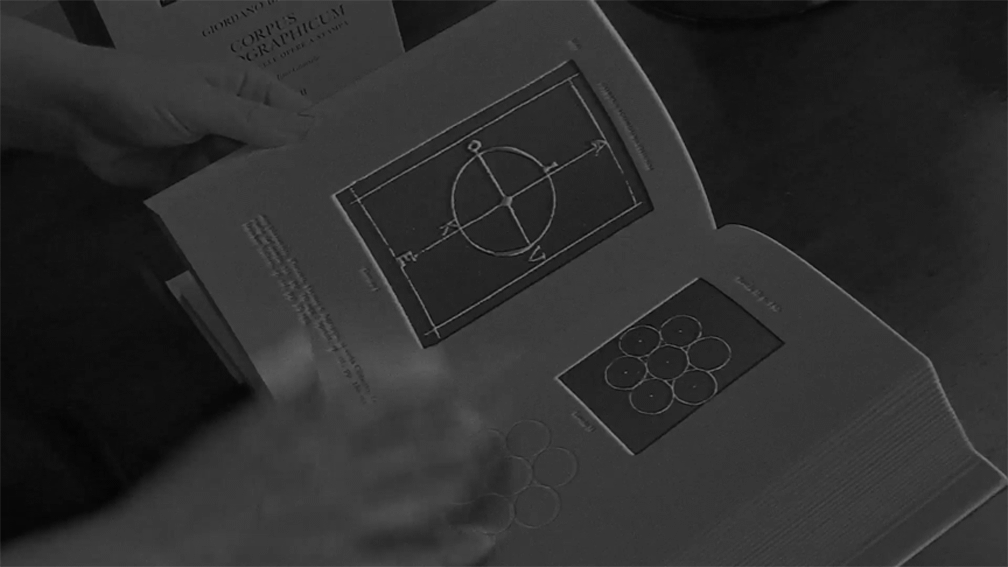


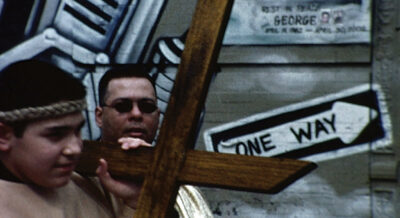


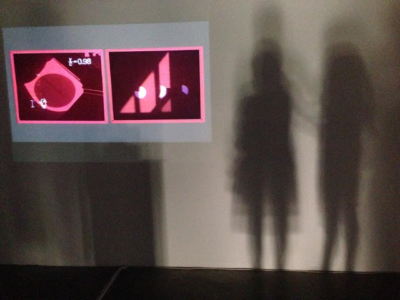


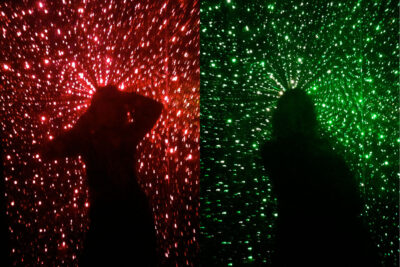

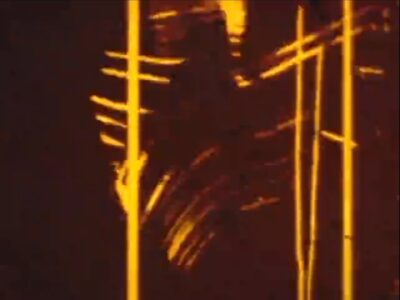
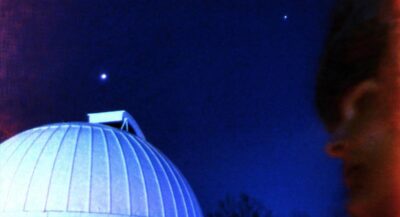
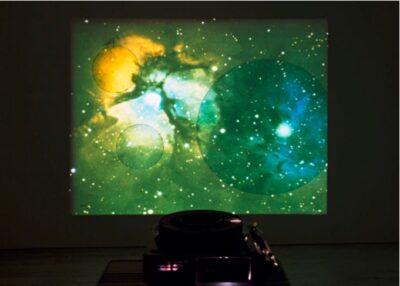
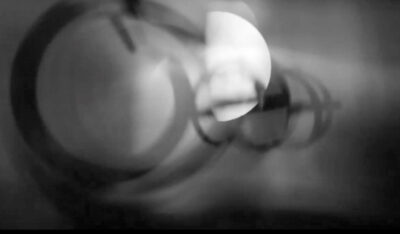
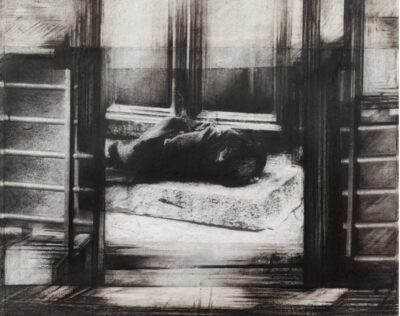

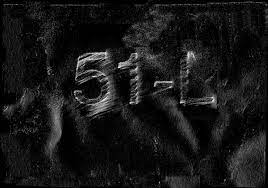



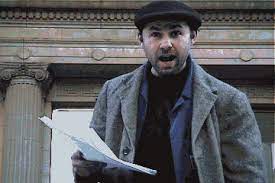

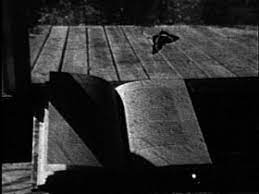






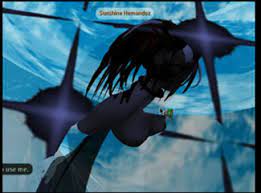


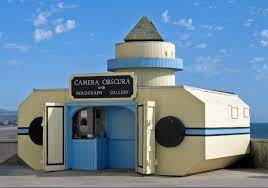
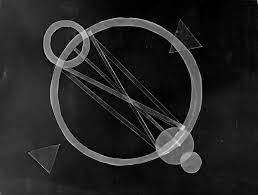
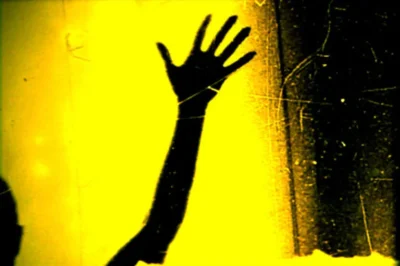
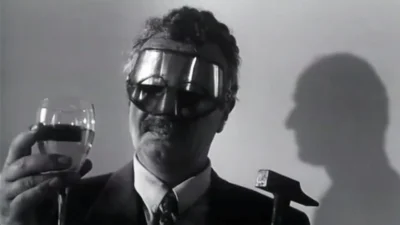

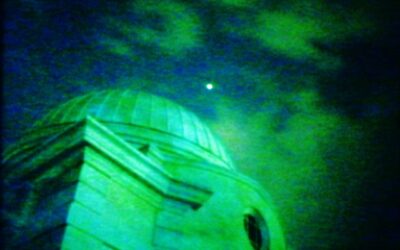
______
Further
Jeanne Liotta Site
JL @ Lightcone
JL @ Facebook
JL @ Microscope Gallery
JEANNE LIOTTA by Mark Alice Durant
JL @ The Film-makers Cooperative
JL @ MUBI
Raha Raissnia by Jeanne Liotta
Jeanne Liotta: The World is a Picture of the World
Jeanne Liotta: Celestial Bodies
Bradley Eros & Jeanne Liotta: Subverted Horseplay
Remembering Jonas Mekas by Jeanne Liotta
The Celestial Library: Films by Jeanne Liotta
Jeanne Liotta: The World is a Picture of the World
JL @ Letterboxd
Lexicon of Spatial Concepts for Giordano Bruno by Jeanne Liotta
FEATURED FILMMAKER: JEANNE LIOTTA
Citizen Science: The enlightenment of Jeanne Liotta
_____
Extras
A chat with Jeanne Liotta
“In This Immense Space hidden Things Appear Before Us”, 2018
Forties 58, Jeanne Liotta
_____
Interview

Mark Alice Durant – One really learns by following one’s curiosities and enthusiasms, and in that sense your approach to knowledge and culture is enthusiastic, it’s obvious in how you talk about things but that quality also in your work. I am also unpedigreed in a certain sense and am led by enthusiasms. One can be self-conscious about that, especially in academic or professional contexts, and there is the danger of dilettante-ism. But to follow one’s enthusiasms and curiosities allows one to be more embracing and less critical, so that collage nature of learning can be very fruitful.
Jeanne Liotta – It’s not like the world is a certain way – it’s a construction of many parts and we are participating in that and it makes perfect sense to be in a process of discovery all the time. Also knowledge is not on some progressive trajectory – awareness zigzags all over the place, people forget, cultures forget. Arabic culture had so much wisdom about mathematics and astronomy while the Europeans were digging around in the mud throwing rocks at each other. Discovery is happening all the time and it can be personal. If I discover something for myself – it still feels like an authentic discovery. I remember following instructions in an astronomy book to look up at the Big Dipper and follow a star pattern until you see a faint glow called Sidus Ludoviciana or ‘Ludwig’s Star’. But when I ‘discovered’ that particular star for myself, I dropped my binoculars on the ground from the shock to my system. That I could follow these instructions and see something there and know that I was seeing basically in the same manner as that guy 300 years ago.
MAD – Have you ever had that happen with art?
JL – Yes.
MAD – I ask because your story reminded me of when I saw the Fra Angelico frescoes for the first time in Florence. Each one is painted inside a single small cell where a monk would sleep and pray. The monastery is now a museum of course and you walk down these non-descript hallways but when you bend down to step inside one of the cells you are confronted with this image – the scale is so human, the colors seeped into the wall like dyed skin and I was overwhelmed by the intimate beauty of it, the idea that this image was painted for individual contemplation. Here I was some white trash guy from Boston at the end of the 20th c. shuddering in front of a 600-year-old Italian painting. The mysterious power of recognition across the centuries, shaking me to my core. Is that power in the painting, or is it in me? How does such power get activated?
JL – That image is a tool. It’s not just art, it’s beyond art because its made for use. Like Indian yantras those abstract design patterns, which help in meditation. The word yantra in Sanskrit means ‘machine’, it’s a machine to help you do something. It is ancient knowledge that an image can be a mechanism to help you move, to transform. Speaking of religious paintings I felt like that when I went to see the Isenheim Altar piece by Grunewald. Originally commissioned for a convent where victims of the plague were being tended. So it’s a painting of Jesus who is supposed to have suffered more than any human, yet he goes willingly toward his suffering. So you have to show images to help people endure their own suffering, and its got to be worse than what they are going through. Grunewald’s Jesus is disgusting, he is green, almost melting off the cross, and his mother stands by utterly stricken, white as a sheet. I have never seen anything so abject in religious painting. Originally it was a polyptych so various panels could be opened and closed depending on the message or desired effect, again like a machine with particular functions. On the other side is the painted Resurrection, and equally stunning, the figure of Christ rising through this diaphanous yellow mist. It’s as crazy as a Dali painting. And it struck me that these images are like medicine.
MAD – I am thinking about all those insipid portraits of Christ that hang in middle class American homes in which Christ looks like a 1970s soccer coach or soft rock guy, like Loggins and Messina or a member of the Eagles. That Christ did not need to look like he suffered because pictures like that adorned comfortable homes, so actually looking at his suffering would be ‘icky’ or impolite somehow.
JL – The one I had hanging in my room was the most like ‘Loggins and Messina’ you can imagine, all beiges and browns, the curling hair and soft light…. And you’ll appreciate this, there was a tiny speck of light in his eye and my mother who was a mystical Irish catholic said – ‘See that light? It is in the shape of the Eucharist in the chalice” I will never forget that.
MAD – Did you see it?
JL – I can see it now. And I wondered was it a miracle or was it just something the artist put there, or was it just like people who see Jesus in a tortilla, just a meeting of random shape and projection. But you don’t have to believe it’s true to have the experience.
MAD – Did you study art in college?
JL – No, I went to NYU, studied theater, played in a band, working as a waitress and living in a basement apartment in the east village, everyone lived in basement apartments. I just wanted to be a bohemian, to live a bohemian life. I don’t think I recognized it at the time but that exactly what I was doing. But it was the punk ethos of ‘No Masterpieces’, everyone was doing everything, artists were in bands, the musicians were actors…. it was a super fluid time. We would put on shows, make projections for backdrops, play the music. I worked with a variety of collaborative groups like Gargoyle Mechanique and the Alchemical Theater Company. My art school education started with being an artist’s model, I had a child at a young age and I was wandering around trying to figure out what I was doing or going to do with my life and I started modeling at Cooper Union. That was the first time I ever stepped foot in an art school. And its almost like church, you are sitting there, still. Dealing with duration, listening to artists impart their knowledge. As a model I got so into the art of presentation and the tradition of the artists model I would go home and practice! I’d check out Rodin books from the library and in front of my mirror at home I would try to recreate the poses and gestures in his sculptures and drawings. It was the best job.
MAD – How about film – when did you become involved in film?
JL – I was always into photography, since high school. When I was working with Gargoyle Mechanique I was doing slide backdrops, bleaching and altering the images, thinking about sequencing. Someone bought a Super 8 camera and we used that to make short films. One involved me spinning around in a white dress on a black background. And we did this piece with that film looping through a projector that someone carried through a labyrinth leading the audience to a place where I was actually there spinning. Things like this really got me to thinking about film, performance, structure, and presentation. But I didn’t make my first film until I was 27.
MAD – I wanted to talk to you a little about your film Observando Del Cielo. In talking about this film you described the earth as your tripod. I really like that idea and puts me in the mind of comparing wondrous technologies like the Hubble telescope and the more humble efforts of individual artists – who in some ways are trying to discover and speak about the infinite just with way more limited resources. I generally don’t like the ‘Big Questions’ in art. I prefer specificity, but in your images of the heavens there is a real human quality. There is specificity in the attempt to represent something beyond our comprehension. Your mystery never veers into vagueness or pretense.
JL – I spent 10 years filming and assembling very subjective and fragmentary footage of the skies, and on days I was full of doubt, I would ask myself why I was doing such a foolish and fanciful thing when NASA does it so much better. But that’s our job, not only as artists, but also as humans to gaze up at the stars and contemplate. I don’t like the word ‘wonder’ because it implies an end to itself which seems simplistic, childlike and unconnected to the search for and creation of knowledge. And if you wanted to make images of that you don’t need much – you don’t need the Hubble, all you need is a Bolex, a pinhole camera. But the whole idea of visualization in science is crucial. In a way we are moving beyond seeing faraway objects. We are trying to visualize data and there is an interpretive process there. Scientist’s imaginations and theoretical guesses are at play in imaging the universe, and I love that we are all in this imaginative world together, trying to see what it is.
There is imagery in my film of the starry heavens swirling by just moments of screen time but to capture that footage I had to sit on the side of a mountain for the entire night and I have to say that I had some pretty dark thoughts while I was trying to grasp the enormity of it and it was scary. Insignificance is not the right word, I felt utterly unprotected and joyful simultaneously. Knowing you are unprotected is terrifying and liberating, I wasn’t looking for protection, I was just trying to recognize my being in the middle of all this. I thought to myself ‘This is it, I am alive under the forces’. It ain’t about beauty – it is the sublime, terror, and awe. It’s not like I am against beauty, it is everywhere and can appear at any moment. Ironically, someone once came up to me after a screening of Observando and asked me how could I make such a beautiful thing in such a terrible world.
MAD – Someone asked you that! How rude! Well that should be title of this interview. But really that is so awful and pretentious, and it’s the wrong question.
JL – Yes but it is something to grapple with right?
MAD – I don’t know, That you are ethically suspect because you are not taking on the ‘real’ issues of the world’? Who determines that?
JL – Yes but what my answer was that I was taking on the issues of the world, that is exactly what I thought I was doing. I was really trying to see what is this place that I live in? How does it work? That is initially why I started making that film. Was it possible to make a film like that? We are on these planets spinning in space and it sounds so silly to say it but it’s crazy that that is our reality. We don’t feel it but it can be seen through the Kino eye – the camera helps us see what the eye cannot. I believe in art, I think artists are helping to run the engine of consciousness. So in that sense the Constructivists were right, making art is a kind of labor, an activity that is helping to transform the world. At the very least we get to leave a mark, some evidence of what it was like to live in our time.
________________
12 of Jeanne Liotta’s 38 films
_______________
Land of Enchantment (1994)
‘New Mexico camera roll, a Kodachrome home movie, with compass.’ — JL
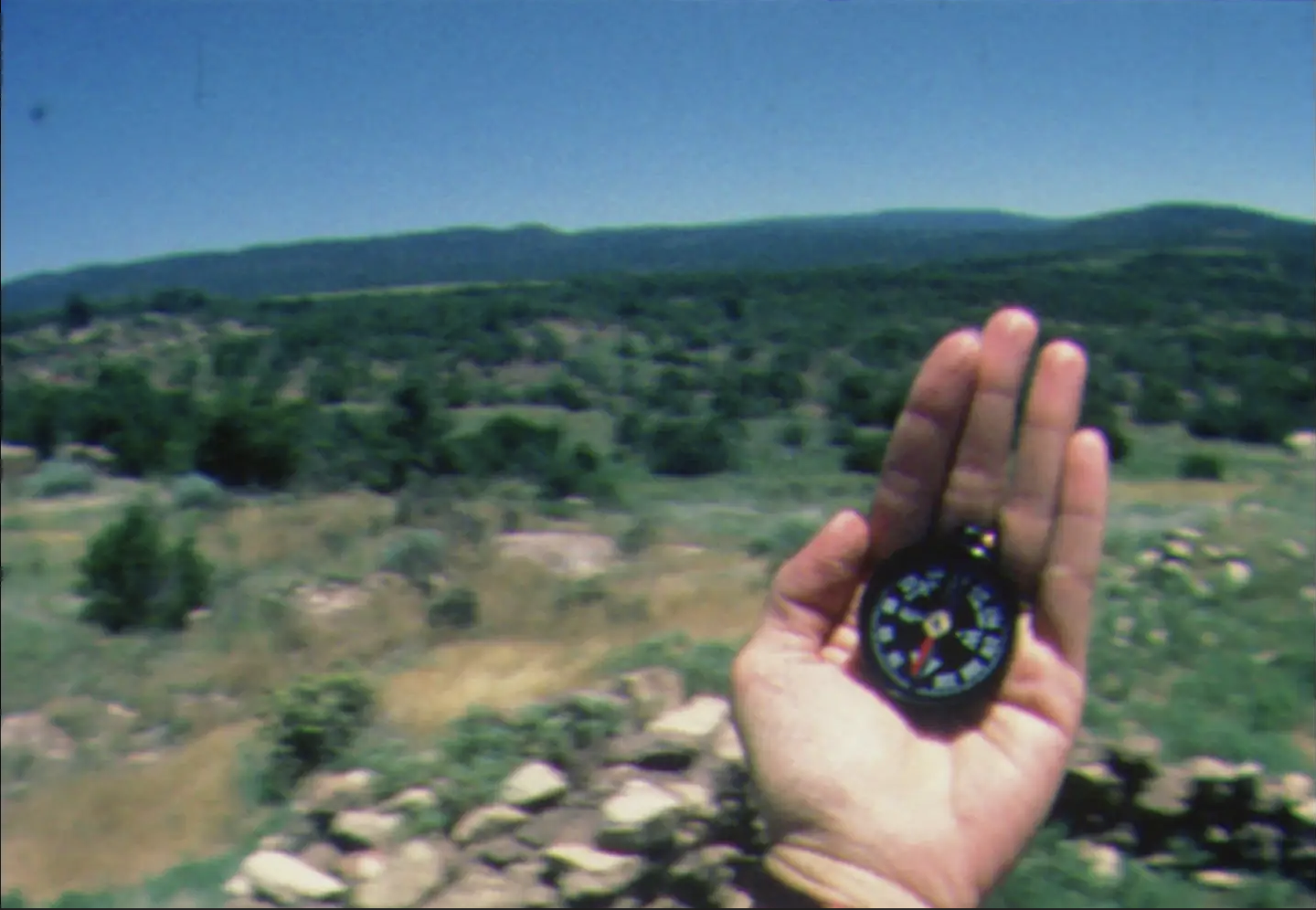
______________
What Makes Day and Night (1998)
‘This 1940’s artifact is coupled with music by Nino Rota to expose the existential skeleton in the closet: our perilous journey on the planet Earth. A readymade film with the barest of interventions.’ — JL
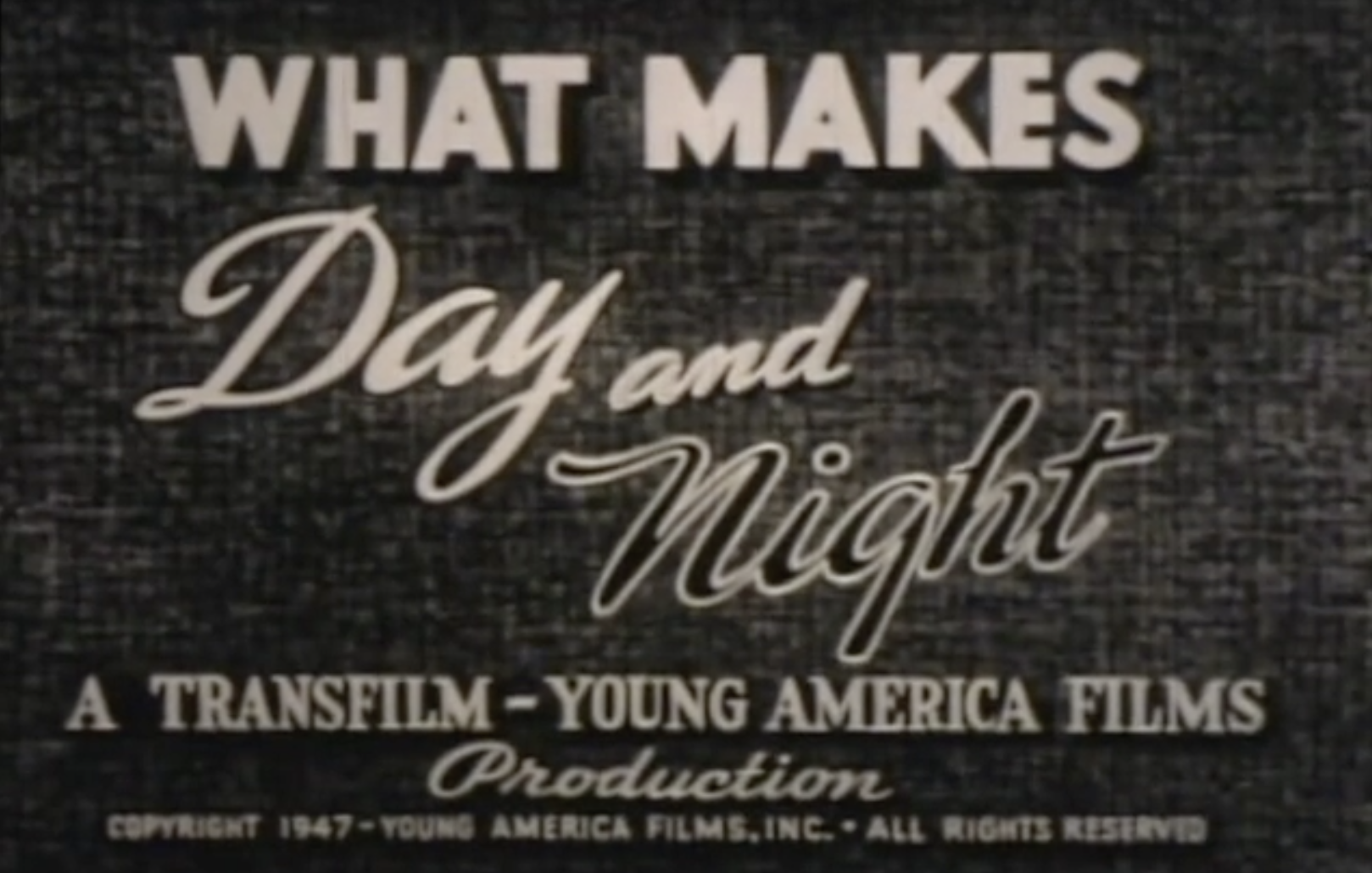
_______________
Muktikara (1999)
‘From the Sanskrit, ‘gentle gazing brings liberation’, the title is also the name of the particular body of water which is the image-subject of the film. Landscape as ‘inscape’, not inertly present but beckoning an active perception; a seeing and a seeing into. “… as if my eye were still growing…”‘ — The Film-makers Cooperative

____________
Loretta (2003)
‘For film is a projected light from which its inhabitants can never truly escape. In Jeanne Liotta‘s experimental short film Loretta, the form of a female figure is literally burned into the film and projected with a searing intensity as bright as the sun. Is the woman reaching out to grab our attention? Or are we just voyeurs peeping in as she luxuriates in her own existence?
‘Everything about this four-minute short film is burning with intensity, from the searing yellow flickering that never stops long enough for us to get our bearings to the over-the-top dramatic score arranged by Carlo Altomare.
‘Produced in 16mm, Loretta still works very well watching it on video, although one can imagine a film projection would truly create the sense of projected celluloid going haywire, careening through the projector like a rocketship sucked through a wormhole. But, even watching on a computer monitor, the chaotic, rushing stream of images has a furious energy that’s immensely invigorating.’ — Underground Film Journal

_______________
One Day This May No Longer Exist (2005)
‘Live performance with 2 16mm film projectors and colored filters by artist Jeanne Liotta set to sound by Sun City Girls , San Francisco 2005’.
Intro
______________
Observando El Cielo (2007)
‘Seven years of celestial field recordings gathered from the chaos of the cosmos and inscribed onto 16mm film from various locations upon this turning tripod Earth. This work is neither a metaphor nor a symbol, but is feeling towards a fact in the mist of perception, which time flows through. Natural VLF radio recordings of the magnetosphere in action allow the universe to speak for itself. The Sublime is Now. Amor Fati!’ — Lightcone
Excerpt
__________
Sutro (2009)
‘Animated glitch portrait of the eponymous television tower on the hill, guardian of fog and electronic signals in that earthshaking city by the Bay…’ — JL
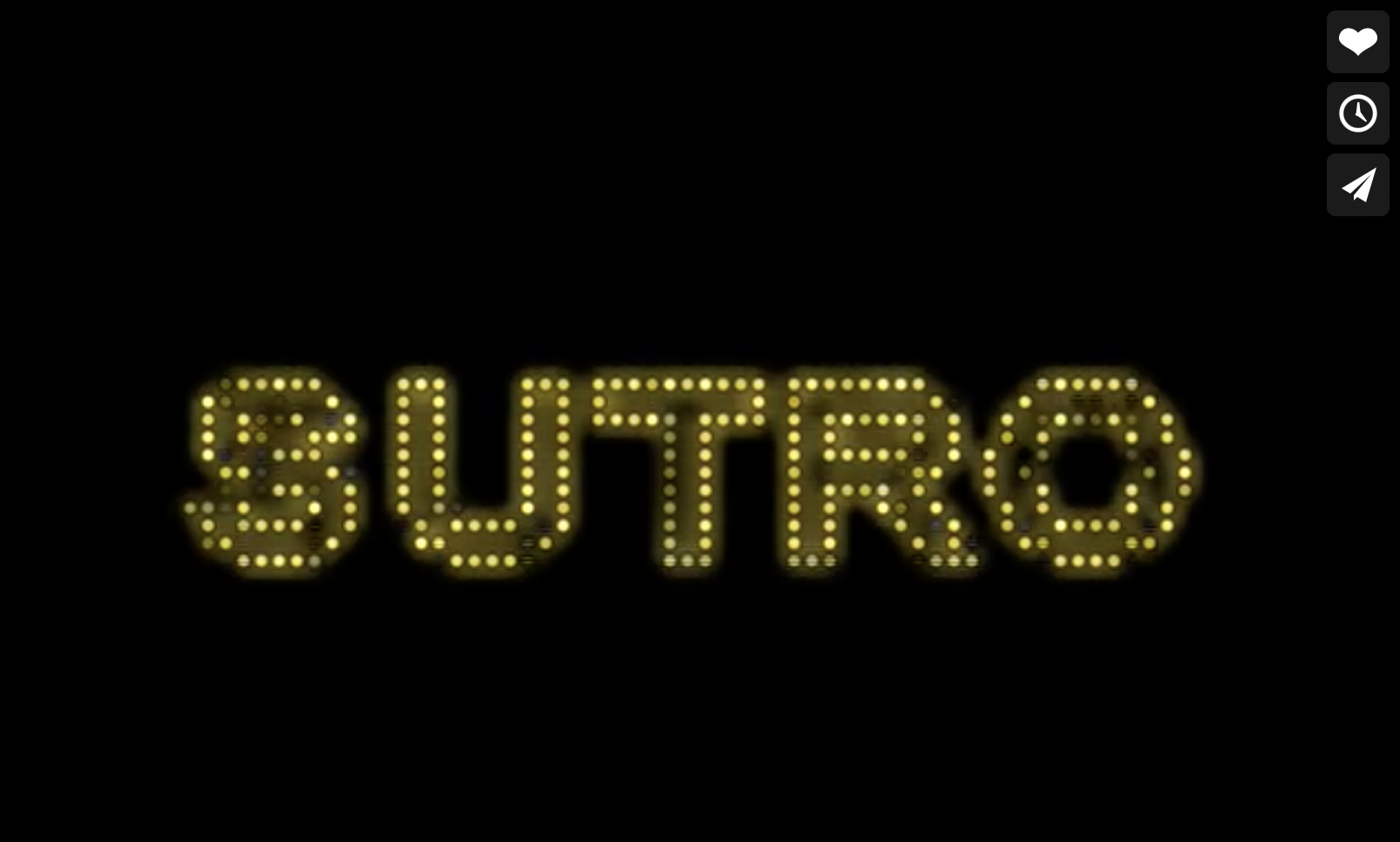
______________
Crosswalk (2010)
‘”Nuyo-realism” from the streets of Manhattan’s Lower East Side, Crosswalk is a place-portrait in sound and image that’s shot at the stylistic intersection of home movie and cinema verité. Filmed on consecutive Good Fridays, the short work highlights the hybrid collage of peoples, cultures, and performances that characterizes daily life in the LES.’ — Wexner Center
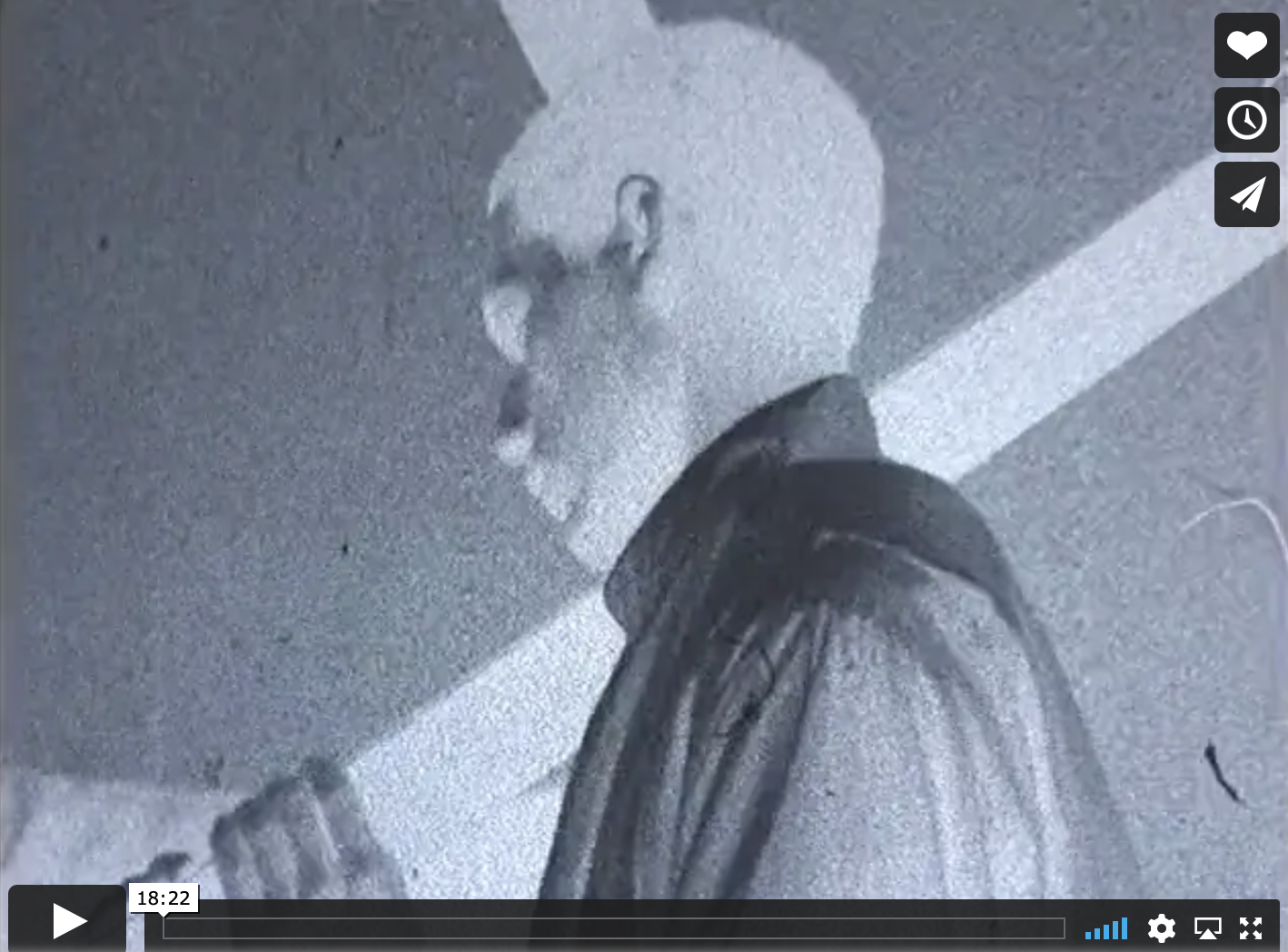
_______________
Dark Enough (2011)
‘A virtual proscenium stage for the poetry to play itself upon. Text-as-text, text-as-image, avoiding poetic illustration by way of poetic illustration. Sound composed for 60 cycle hum and Tibetan bell.’ — Counterpath
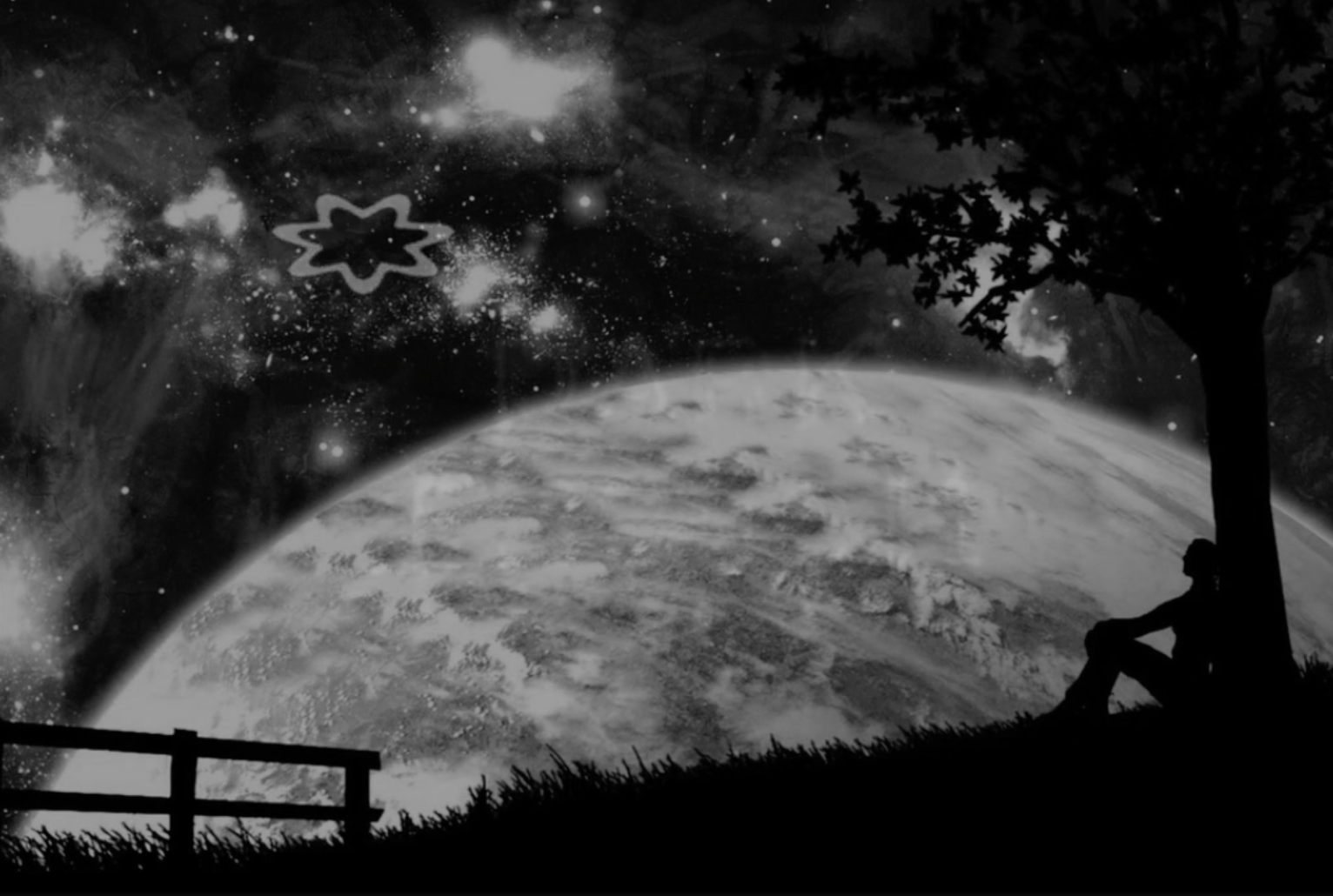
______________
Counterintuitive Proposition for a Black Hole (2012)
‘In Counterintuitive Proposition for a Black Hole, a magnifying glass is suspended inside the beam of the projeciton, creating a shadow in the filmed image of the night sky. As of this moment astrophyscists have yet to actaully *see* a black hole, an infintely dense space that is inherently invisible to us since light is trapped and prevented from escaping. The visualisations they have created are based on observed behaviors of other celestial bodies and gravitational forces in the vicinity.’ — JL
Excerpt
____________
Property (2013)
‘A few simple techniques of the cinema–a direct quotation, a framed location, an actress in costume, a few cuts to the quick–conspire in a compact couple of minutes to produce an image replete with historical and geographic visibility, to wit: an implied and uncontainable expanse of a landscape bought, sold and inhabited. An anti-landscape film and a one-two punch.’ — Light Cone
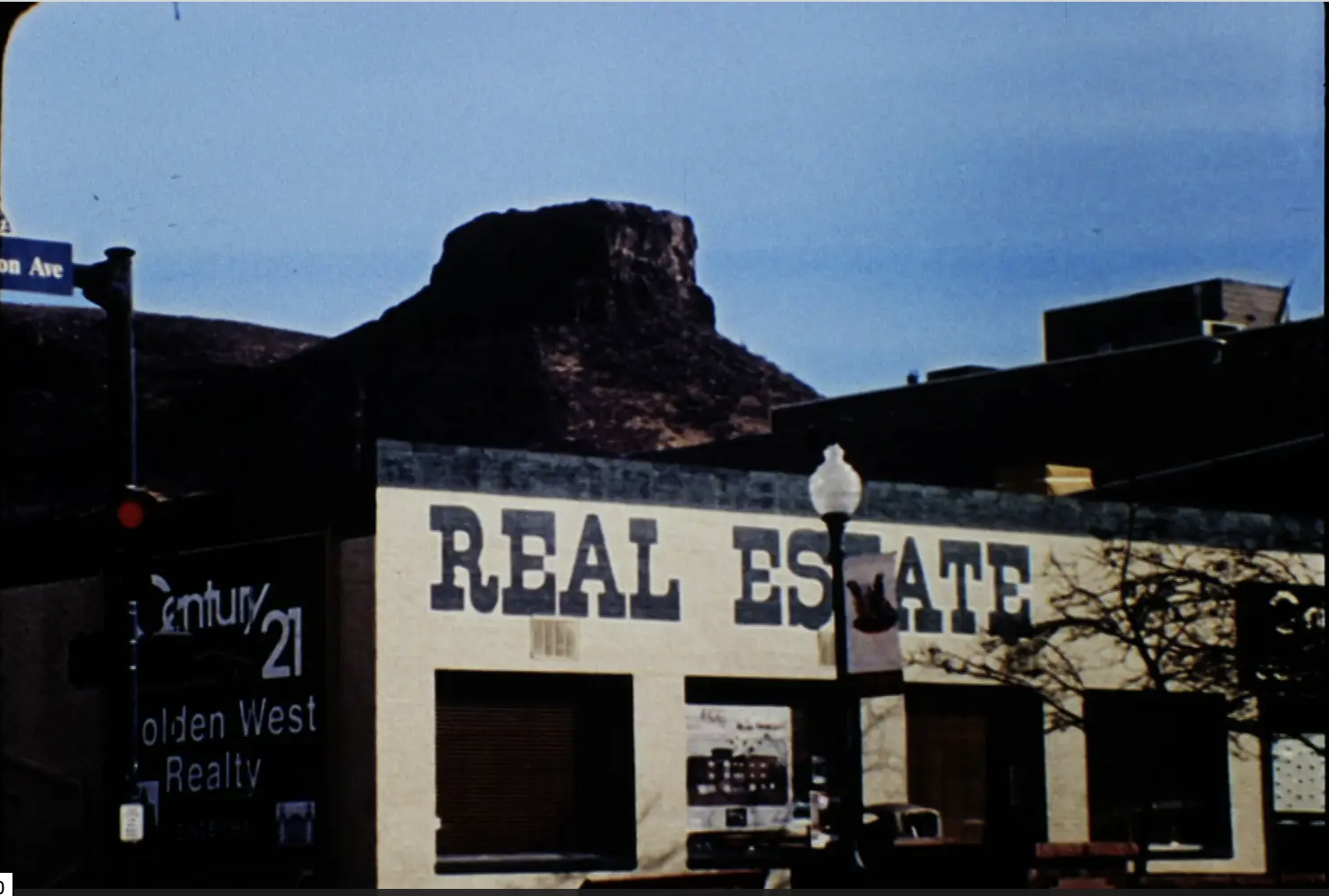
See the trailer here
See an excerpt here
____________
Affect Theory (2013)
‘2 16mm science education films in planet -and-satellite positions on the screen, with sound collage of Cole Porter variations. A live double projection event.’ — JL

*
p.s. Hey. ** _Black_Acrylic, Hi, Ben. Oh, right … Everyone, If you’d like a little more of yesterday’s host Nick Brook and his subject Beckford plus a dollop of _Black_Acrylic, here’s a 2010 Yuck ‘n Yum article about Beckford and ‘Vathek’ that the aforementioned power duo co-authored. Nick was so talented and such an interesting guy. I often wonder what became of him. I’ve found no signs anywhere. Wow, your own flat. That place looks cheerful, Excellent news, man. When would you move? ** David Ehrenstein, Thanks on Nick’s behalf! ** Dominik, Hi!!! I knew Paul Monette a little. We were both LA queer writers and did a lot of bumping into another and reading together at events on a few occasions. A very lovely guy. Ha ha. Right, there are posters for the new Placebo album all over the metro here. I haven’t heard the album yet, but, based on the poster photo, he seems to have gotten thin again and grown a moustache. Love, G. ** Misanthrope, Twenty years ago? Wow. Hijinks are an excellent way to propel a narrative forward without resorting to boring marked-out plot devices. Do whatever it takes to make it the best thing you’ve ever written. That’s the only way to write anything worthy. Me thinks. I’m going to try to cajole Yury into cutting my mane today. ** Mieze, Mieze! Wonderfulness incarnate to see you! Hm, and why can’t you see this place hardly at all anymore? God knows this current incarnation of the blog has technical weirdnesses galore that always surprise me. Anyway, I hope you’re doing most splendidly, and I send you a love supreme! ** Ryan / angusteak, Yuck, glad you’re all vacuumed out. Thanks for the share of your Mishima-derived music. I’ll swallow it the minute I get an actual minute. Or several. Mm, I read a bunch of Mishima when I was younger. I was pretty into most of it. I haven’t thought much about him in recent times. I think your reading on his politics <-> art makes a lot of sense. I don’t think I ever mentally delved into that question at any depth. I think I read his stuff not thinking about him personally much at all. I tend to just read things without any thought of the person who wrote it or what their lives or politics, etc. involve. I’m not really so into the cult of personality unless it’s an artist whose art involves smashing their person or persona in your face. And I don’t find those kinds of artists very interesting. Or at least when it comes to books. Even with Burroughs, I tried not to think about his weirdo old dude schtick when I was reading him. In music it can be fun sometimes. Anyway, very interesting Mishima thoughts and tidbits, thanks, man. They make me want to think about him. French shows! Whoa! Yes, let me know if/when those happen I’ll be there, at least the Paris show, whatever it takes. ** Bill, Hi. The Xenakis show was frustratingly small, if that helps. There were a number of performances of his works, which I was very excited about, but they all sold out instantly, and I was bereft. ‘Nancy’: interesting and news. I’ll, you know, see of I can hook myself up. Thanks, buddy. ** Rafe, Hey. Cool, yeah, Nick did a great job. Right? About Bernstein/Andrews? They should organise a kind of old school Language Poetry Lollapalooza type traveling festival. It might get their books in the charts. Oh, wow, your drawings are really fantastic! I’m going to return to them post-p.s. and get lengthier looks. Very, very nice! Thank you so very much! Everyone, Rafe shared some really terrific drawings of his yesterday that could’ve cozied up in the weekends XXX post, and you can check them out one by one. Here, here, here, here, and here. I especially love the second to last one for some reason. Have a super incredible day! ** Sypha, I, of course, wondered if you’d read ‘Vathek’ and assumed you must’ve. I’ve actually read ‘The Monk’, but the rest are mysteries to me. Thanks, James. ** Right. Today I use the blog to cover the work of yet another very strong and daring filmmaker whom I guessing that many of you are not familiar with. The hope is that you’ll investigate her work and get something useful out of it. But that and the rest is entirely up to you. See you tomorrow.




 Now available in North America
Now available in North America 
“Land of Enchantment” is the ideal title for all ofLiotta’s work.
Working on the Pasolini episode for my podcast “The David Ehrenstein Show”which should be up and running in a month’s time.
Here’s Ninetto today
Hi!!
Oh. What wouldn’t I give to attend an event where both you and Paul read… But I was four when Paul died, so…
I remember you mentioning that Placebo’s The Band in Paris for some reason (I mean, it’s not like I can’t understand), so I had a hunch that fans were celebrating the new album mightily. I really, really love it. I’ll never in my life understand the need for a moustache, though. Ever. Haha.
Ah. Okay. Okay, love, I’m in love. Thank you! Love looking for an AI application that’ll write him a novel in 10 minutes so that he can be hailed as a writer more prolific than Stephen King, Od.
Jeanne Liotta is a new name for me, no surprise. I’m always grateful for the opportunity to see such experimental film work as it’s off-limits for most home viewers.
Dunno exactly when I’ll be moving in to this new flat as it’s not been finished quite yet. Maybe later in the year? There’s a “state of the art cinema” as part of the development lol.
BTW, the dissolve yourself label posted a 90-minute Thaiboy Digital mixtape on YouTube, with a download link: https://www.youtube.com/watch?v=NJ0xJhC8K7M&t=50s&ab_channel=dismissyourself.
My mom seems to be doing better. The painkillers are effective up to a point, but as far as I know she still hasn’t left the house for anything except doctor’s visits in more than a month.
For Gay City News, I reviewed David France’s COVID documentary HOW TO SURVIVE A PANDEMIC: https://gaycitynews.com/how-to-survive-a-pandemic-praises-scientists-denounces-greed/
Hi Dennis —thank you about the drawings, and for this wonderful post today. I can’t stop thinking about how much fun that festival would be!